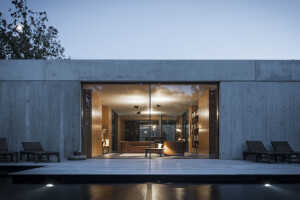Atom is a project located in a very small retail space where size restrictions encouraged us to work on design strategies that responded to the client's business plan and budget. Atom achieves maximum profitability from the space because the food preparation area is similar to a food truck. Storage room and restrooms were designed in a minimal area, this allowed us to have more space for diners.

It is a restaurant that was inspired by traditional American diners. This design is based on references created by fast-food franchises but subtly and elegantly. Behind this project exists a strong investigation on diners' sensorial experience, as well as the use of an architectural semiotic language, and a narrative that connects users with a full gastronomic experience for eating a smashed hamburger.
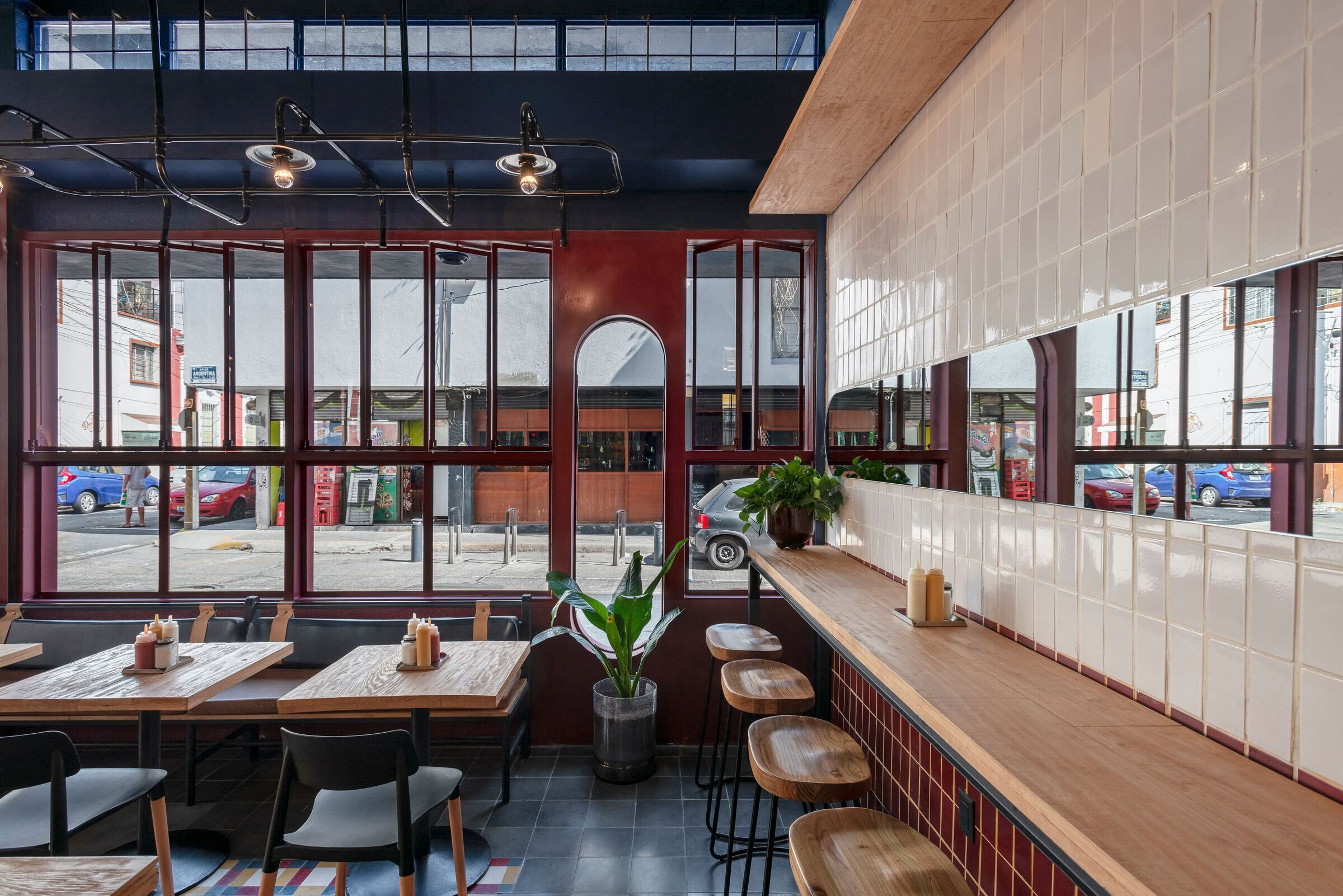
The concept originates from the connection of symbols and meanings of what we recognize from a traditional fast food restaurant. The colors used such as yellow and red refer to mustard and ketchup and are used to connect fragments of memory from previous fast-food experiences but in a delicate way. For this project, we use only regional materials and local craftsmen. We set ourselves the task of designing the pavement with traditional polished concrete tiles, lighting fixtures, and furniture.
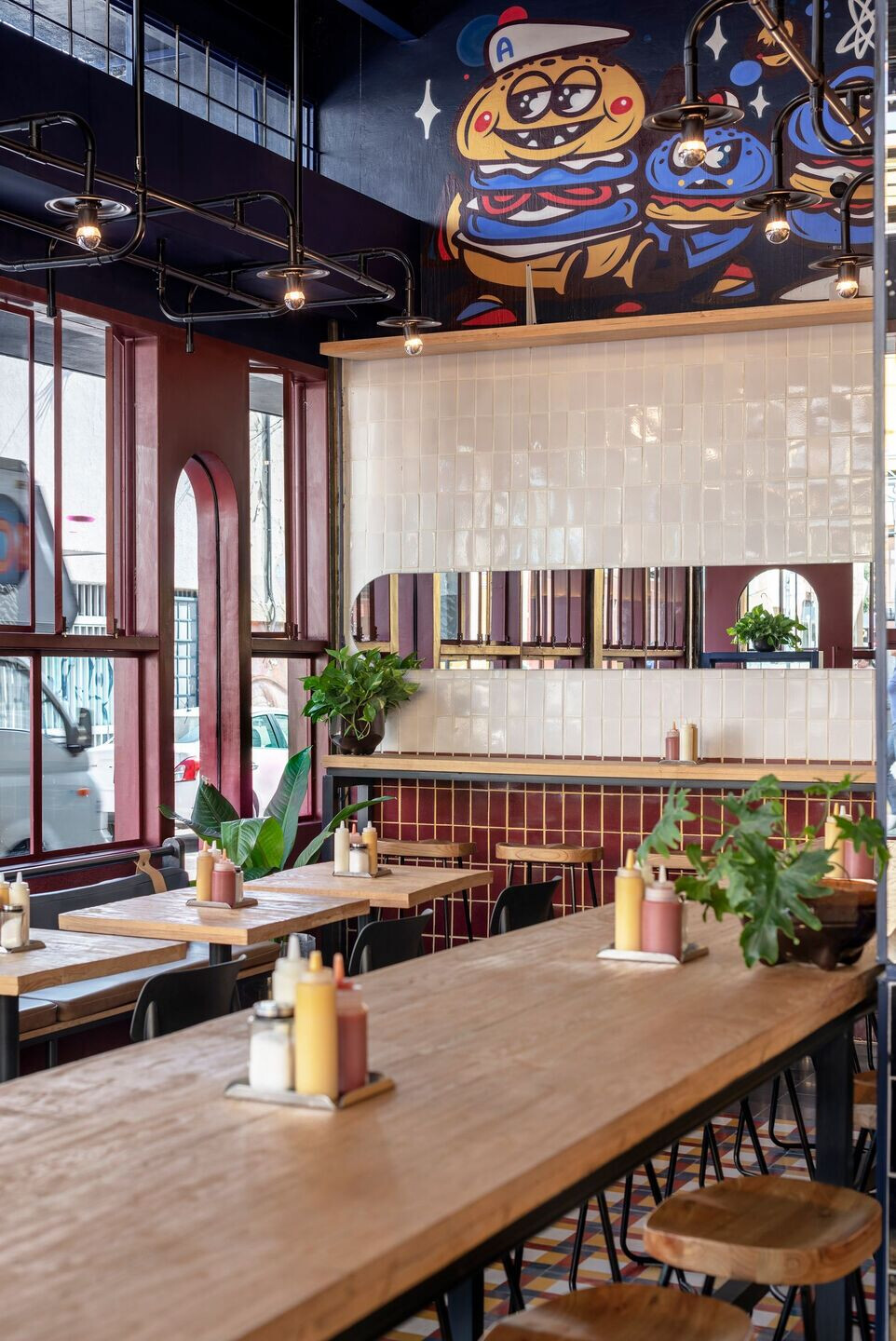
Atom's design also consists emphasizing the specific use of traditional ceramics from western Mexico, the tiles we used are irregular and produced traditionally, so each color and dimension are always different, their shapes and unions enabled us to achieve unique textures where one can even notice traces of the craftsmen. The same happens for each luminary that was created from pewter plates, surgical bulb lights, and metal pipes providing the space with a jaunty and fun look.
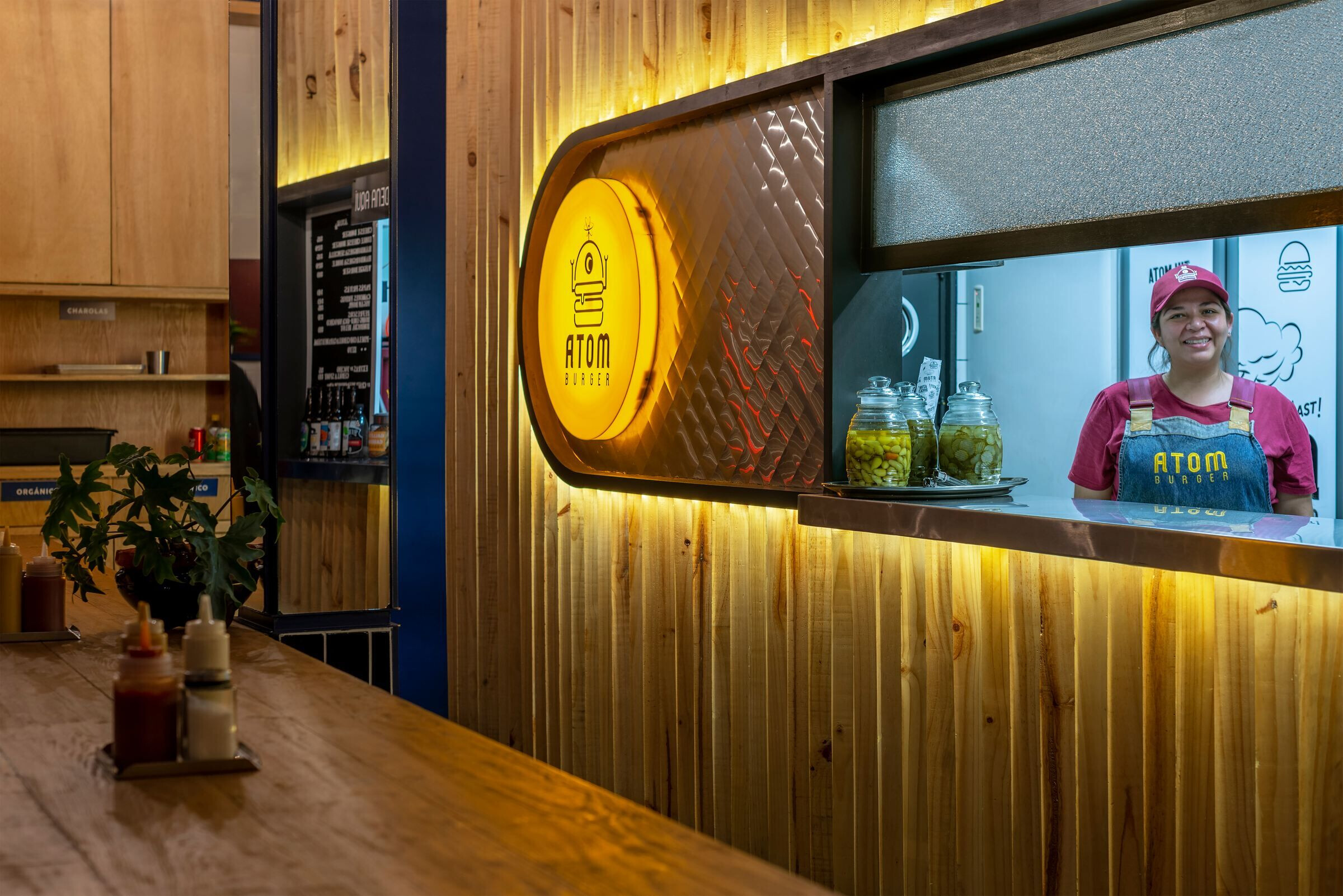
Atom evokes a particular inspiration, The Nighthawks by Eduard Hopper; our design revolves around color, textures, and lights. We also employ textured stainless steel sheet that was traditionally used in 60’s diners, to go for a retro look base on geometric contours and using semicircular windows in the facade.
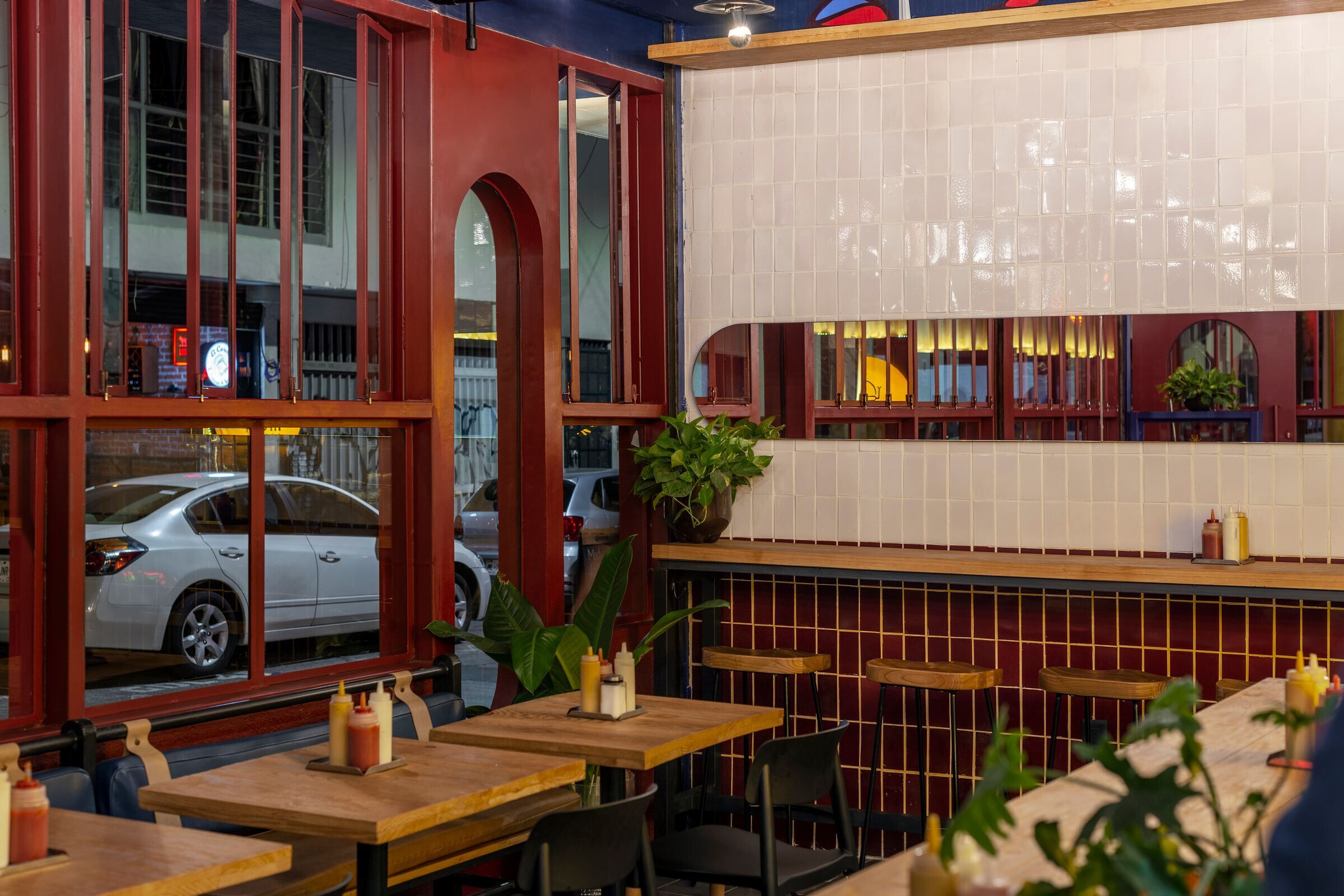
Atom connects with its context day and night. It unites previous experiences of traditional American diners, discouraging the typical franchise and positioning a new culinary adventure. And most of all, it connects users with the pleasure of eating this new atomic smashed burger in the city.
















